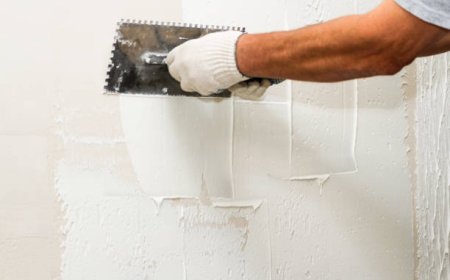Rotary Screw Compressor Cleaning: Why It Matters and How to Do It Right
Dirty coolers and filters are some of the most common causes of performance issues in rotary screw compressors.

Rotary screw compressors are widely used in industries that demand a continuous supply of compressed air. These machines are known for their efficiency, durability, and low maintenancewhen cared for properly. One of the most critical yet often overlooked aspects of that care is cleaning.
Regular rotary screw compressor cleaning not only ensures peak performance but also helps extend the life of the machine, improve energy efficiency, and prevent costly downtime. In this article, well cover why cleaning is essential, what components need attention, and how to safely and effectively clean your rotary screw compressor.
? Why Cleaning Your Rotary Screw Compressor Is Important
Even if the unit seems to be working fine, dust, oil, and grime buildup can silently affect performance over time. Here's what regular cleaning helps with:
-
? Prevents overheating
-
? Improves cooling efficiency
-
? Reduces strain on internal components
-
? Ensures clean air output
-
? Minimizes the risk of breakdowns
Dirty coolers and filters are some of the most common causes of performance issues in rotary screw compressors.
? What Parts of a Rotary Screw Compressor Need Cleaning?
-
Air Filters
-
Oil Filters
-
Air/Oil Separator
-
Coolers (Aftercooler & Intercooler)
-
External Surface and Vents
-
Intake Vents and Cabinet Interior
Each of these components can collect dust, oil mist, and debris during normal operation.
?? Step-by-Step Guide to Cleaning a Rotary Screw Compressor
?? Note: Always disconnect the power supply before performing maintenance or cleaning.
1. Clean or Replace the Air Filter
-
Remove the filter element from the housing.
-
Blow it out with low-pressure air (from inside out) if it's reusable.
-
Replace if its clogged or damaged.
Frequency: Inspect weekly; replace every 1,0002,000 hours or as recommended.
2. Clean the Oil Filter Housing
-
Wipe down the oil filter housing during oil changes.
-
If the filter is cartridge-type, replace it completely.
Tip: Use lint-free cloths to avoid contaminating the oil circuit.
3. Clean the Air/Oil Separator
-
Clean the separator housing of any sludge or residue.
-
Replace the separator element as needed to maintain air purity.
Note: A clogged separator increases pressure drop, affecting efficiency.
4. Clean the Coolers (Intercooler and Aftercooler)
-
Use compressed air to blow out dirt, dust, and debris from fins.
-
For heavy buildup, a gentle water rinse or cooler-cleaning solution may be usedavoid pressure washing.
-
Make sure the cooler is dry before restarting the compressor.
Frequency: Every 23 months, or more frequently in dusty environments.
5. Wipe Down External Surfaces and Ventilation Grills
-
Clean exterior panels, vents, and enclosures to prevent dust clogging.
-
Ensure ventilation openings are free from obstructions.
Tip: A clean external surface also helps in spotting leaks early.
6. Inspect and Clean the Inside of the Cabinet
-
Vacuum any accumulated dust or debris inside the cabinet.
-
Check for oil leaks or water condensation.
Safety Tip: Wear gloves and safety glasses while cleaning inside the unit.
? Best Practices for Compressor Cleaning
-
Always follow the manufacturers cleaning guidelines.
-
Use only approved cleaning agents and compressed air.
-
Avoid high-pressure sprays directly on electrical parts or cooling fins.
-
Schedule cleaning as part of your preventive maintenance plan.
-
Document cleaning activities for compliance and service tracking.
? Conclusion: Clean Compressor, Efficient Operation
Your rotary screw compressor is a major investmentand keeping it clean is a simple but powerful way to protect that investment. By incorporating regular cleaning into your maintenance routine, you reduce wear and tear, improve energy efficiency, and prevent unplanned downtime.
Remember, clean components mean cool operation, longer service life, and better compressed air quality. Whether youre in manufacturing, automotive, or food processing, cleaning your screw compressor should never be an afterthought.









































